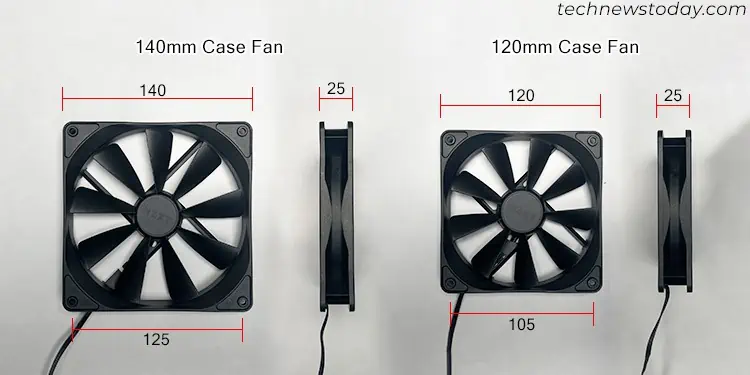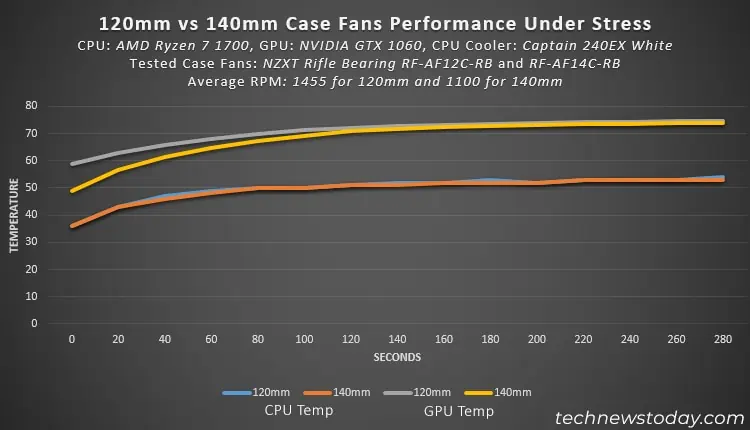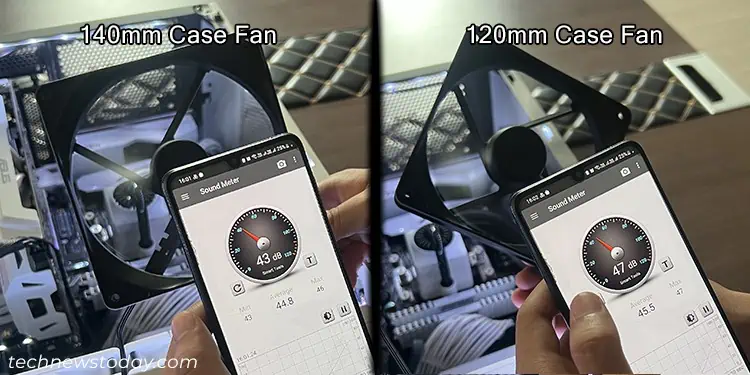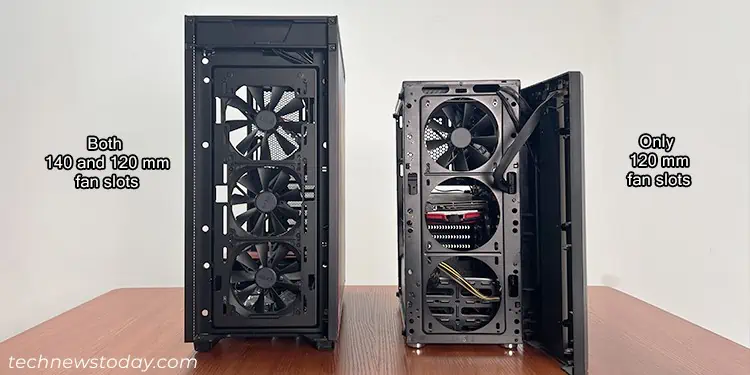120mm and 140mm are the most common sizes of case fans that people use these days. That is why most PC cases come with fan slots that are suitable for one or both of these fan sizes.
While smaller cases usually only have 120mm fan slots, medium to large PC cases support both types of fans. If you arebuilding a PCon a case that supports both, you might want to know which fan will give you the best result.
The overall design and quality of the fan also make a great difference. you may’t expect a mediocre 140mm fan to perform better than a high-quality 120mm fan.

But between the fans of similar models, a standard 140mm fan is always superior to a 120mm one in most regards. So, whenever I am building any PC, I always go for the largest possible size for my case fans.
Differences Between 120mm and 140mm Case Fans
You will usually find 14/12 or 140/120 in the names of the case fans to indicate their size. For example, on NZXT Rifle bearing case fans, the name of the 120mm fan is NZXT Rifle Bearing RF-AF12C-RB, and that for the 140mm fan is NZXT Rifle Bearing RF-AF14C-RB.
A 120mm case fan has dimensions of about120mm x 120mm x 25mm, and itsscrew holes are about105mm apart.For 140mm fans, the dimensions are140mm x 140mm x 25mm,and the distance between the screw holes is120mm. The dimensions of individual products vary slightly within a small tolerance range.

While the overall sizes are different, the motors for the similar models are somewhat the same. So you will find many differences regarding theproduction of airflowand noise, along withthe fan speed. The different distance between the screw holes also indicates that they require different sizes of fan slots on the PC case. Let’s discuss !
Speed, Airflow and Cooling Efficiency
As 140mm fans are larger, they rotate slower compared to 120mm fans with the same voltage. So they tend to have lower RPMs. However, don’t let that fool you into thinking they have lower cooling efficiency. If anything, it’s the opposite.
140mm fans have longer blades and more surface area, so they tend to move more air. So if you test these case fans, you will find that 140mm fans have higher airflow than 120mm fans. Consequently, they are better at cooling.

I tested the CPU andGPU temperaturewhile running stress tests under the same condition while using only one 120mm and 140mm case fan separately on my PC as exhaust. I ran the fans at full speed (1455 RPM for 120mm fan/1100 RPM for 140mm fan) and graphed out the resulting temperature.
As you may see from the graph, there’s not much difference inCPU temperaturesince I wasusing an AIO CPU cooler. But for the GPU, the temperature due to 140mm fan is much lower at low stress. Underhigh GPU usage, the difference is not that significant but with 140mm fan, the GPU still remains slightly cooler.
Other than airflow, static pressure also matters when we are talking about cooling. It represents how well the air can get through obstructions inside the PC case like cables and high-profile components.

140mm fans generally provide less static pressure than 120mm fans. However, they are usually more compatible withlarger PC caseswhere the components are more spread out and don’t need high static pressure.